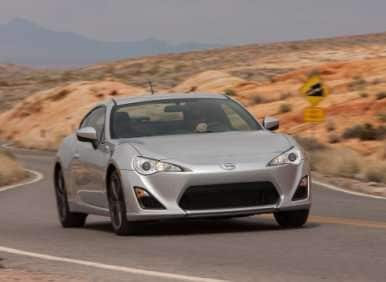Recent Articles
Popular Makes
Body Types
10 Things You Need To Know About The 2013 Scion FR-S

It's been a long time since Toyota has brought a vehicle that could legitimately be labeled 'exciting' to the American market, but the 2013 Scion FR-S definitely makes up for the wait. The Scion FR-S has been the focus of an incredible amount of hype over the past year as sports car fanatics drooled over the promise of a lightweight two-door co-developed by Toyota and Subaru. The sports car renaissance is here in full force, with the FR-S up against a wide range of affordable competitors from Ford, Chevrolet, Hyundai, and Mazda.
Let's take a look at 10 things you need to know about the 2013 Scion FR-S.
01. The 2013 Scion FR-S Is The First Rear-Wheel Drive Scion
The 2013 Scion FR-S is based on a rear-wheel drive chassis, which is perhaps the most salient point for fans of spirited driving. No other member of the Scion lineup comes in any configuration other than front-wheel drive, which helps to further drive home the fact that the Scion FR-S is targeted squarely at enthusiast drivers. Rear-wheel drive was chosen specifically to give the FR-S the best balance on the track and the street, and also to help ensure simplicity of design and remain in the spirit of past Toyota sports car efforts.

02. The 2013 Scion FR-S Provides A Performance-Inspired Drivetrain
The 2013 Scion FR-S is outfitted with a 2.0-liter, four-cylinder engine that has been tuned to provide 200 horsepower. Also capable of generating 151 lb-ft of torque, the unit features a 'boxer' design - that is to say, horizontally-opposed cylinders - that helps it keep a low profile under the hood and contributes to the Scion FR-S' well-planted center of gravity. The 2.0-liter motor can be paired with either a six-speed manual transmission (standard) or a six-speed automatic (optional), and it enables the FR-S leap to 60-mph in 6.6 seconds. Fuel mileage for the Scion is rated at 20-mpg in stop and go driving and 28-mpg during highway cruising.
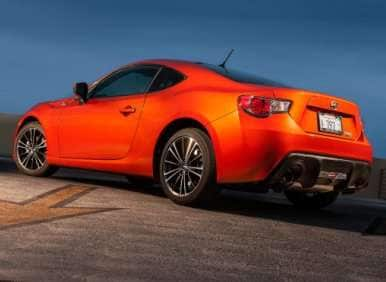
03. The 2013 Scion FR-S Is Designed To Hit The Track
The 2013 Scion FR-S was conceived specifically to appeal to drivers who like to do a bit more than just commute to work and back every day. The Scion FR-S is a track machine pure and simple, from its lightweight design, to its aggressive suspension system, to its high-revving motor that practically begs to be flogged in order to unleash each and every one of its 200 horses. With curb weight 200 lbs south of the 3,000 lbs mark, the FR-S checks in as one of the lightest affordable sports cars currently available, and it has been compared favorably with another low-mass track champion - the Mazda Miata.
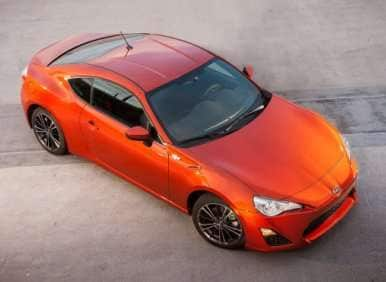
04. The 2013 Scion FR-S Is A Two-Door Coupe
The 2013 Scion FR-S is a compact two-door coupe, which might confuse some buyers already familiar with the Scion lineup who see the Scion tC as occupying a similar space. Truth be told, the two seemingly comparable vehicles have very little in common. As described above, the rear-wheel drive FR-S is an enthusiast's car, one that prizes the purity of the driving experience above all else. The Scion tC is a style maven, a good-looking two-door that counts its curb appeal as perhaps its strongest asset. Its front-wheel drive layout also helps to ensure that those shopping for the tC will most likely pass over the FR-S on their way across the showroom floor.
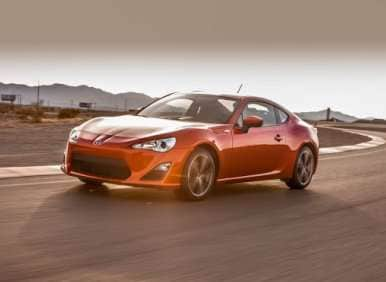
05. The 2013 Scion FR-S Is Offered In A Single Trim Level
Like most Scion models, the 2013 Scion FR-S is offered in a solitary 'base' trim level. The Scion FR-S is reasonably well-equipped right out of the box, coming with features such as air conditioning, an adjustable steering wheel, a Pioneer stereo system that offers HD radio and a CD player (as well as an iPod and a USB input), cruise control, and power windows and door locks. Aluminum trim, sport pedals, special red stitching on the vehicle's seats, and paddle shifters for the automatic transmission are also provided with the car. On the outside, the FR-S wears 17-inch alloy rims and provides power mirrors, a dual exhaust system, and projector headlights.
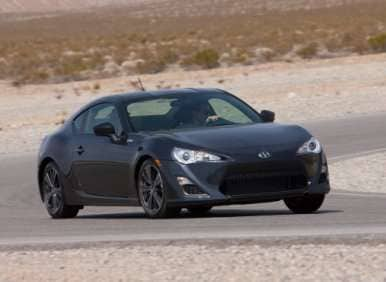
06. The 2013 Scion FR-S Will Eventually Feature Extensive Customization Options
Scion is in the habit of providing buyers with a long list of accessories and options that can be used to dress up their cars, add extra performance, or introduce a higher level of technological sophistication. The 2013 Scion FR-S is a bit different. It does offer up equipment such as a premium audio system from BeSpoke (which also features Bluetooth and Internet connectivity) and an aggressive aerodynamic body kit via the Optimize partnership, but other than that accessories are limited to things like wheel locks and car covers. Eventually, the go-fast parts being offered by TRD Japan should make their way across the Pacific to American Scion dealerships in order to improve on the availability of custom options.

07. The 2013 Scion FR-S Is Mechanically Identical To The Subaru BRZ
The 2013 Scion FR-S was developed in partnership with Subaru, which means that the Subaru BRZ compact coupe is in many ways the twin of Toyota's effort. The two vehicles share an identical chassis and drivetrain, with the engine having been built out of a combination of the boxer design used in the Subaru Impreza matched with Toyota's direct-injection fuel system technology. From the outside, there are a few different cues that have been grafted into each respective vehicle's sheet metal in order to help them differentiate themselves, but when viewed in profile it's clear that these two models were separated at birth.
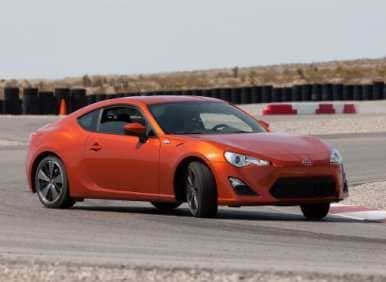
08. The 2013 Scion FR-S Is Sold As The Toyota GT86 In Japan
The Scion brand simply doesn't exist in Japan, which means that when the 2013 Scion FR-S is marketed in its native land it goes under the moniker of the Toyota GT86. This name wasn't chosen by accident - it indicates the clear link between the compact two-door coupe and the Toyota AE86 Corolla, which was a rear-wheel drive two-door hatchback (and coupe) that became famous for its ability to provide well-balanced handling as well as plenty of drift-inducing oversteer, when required. Toyota is hopeful that both the GT86 - and the Scion FR-S - find their own niche in the performance car pantheon and generate the same level of fervent devotion from fans of the brand.
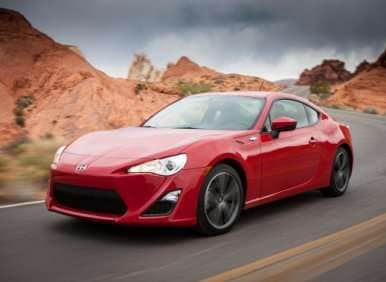
09. The 2013 Scion FR-S Puts Safety First
The 2013 Scion FR-S offers a full complement of safety features designed to protect passengers should the worst come to pass while out on the road. First and foremost are the vehicle's electronic stability control and traction control systems, which are intended to reduce the chances of an accident occurring in the first place. The Scion FR-S also provides dual-stage forward airbags, side curtain airbags that deploy along the entire length of the passenger compartment, and side impact airbags for those seated in the first two positions. Anti-lock brakes, brake assist, and electronic brake force distribution help to ensure that the coupe is capable of arresting its forward motion quickly, and with as little drama as possible.
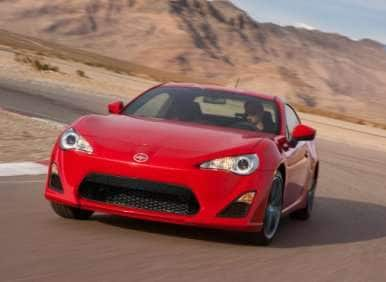
10. The 2013 Scion FR-S Is A Tuner's Dream
As we already mentioned the 2013 Scion FR-S has a whole catalog of TRD performance parts waiting to be imported from Japan. Until that happens, however, there are a host of aftermarket tuners who have leapt out of the gate to provide suspension upgrades, power adders, and body kits for the compact coupe. The Scion FR-S spent so long in the development stage that there existed enough pent-up demand for the car to justify an early investment from performance parts manufacturers, and the strong response to the car has virtually ensured that it will remain a favorite of the tuning crowd for many years to come.
